The Parthenon
The Parthenon today performs a function very similar to the one it was first equipped with back in the middle of the 5th century BC. There are various theories about its exact purpose and use in classical Athens. Opportunities include a conventional temple to Athena, a treasury of appropriated money, or a gesture of competitive city-state pride.
These possibilities all point to a directive involving the glorification of Athens, and an actualization of Athens' retrospective "golden age". The Parthenon still performs this service. In fact, today, it glorifies not only the city of Athens, but the whole of Greece. For many others, it is also worthy of the classic world heritage to see.
However, the Parthenon has far more glory to offer from its history, much of which is not classic.
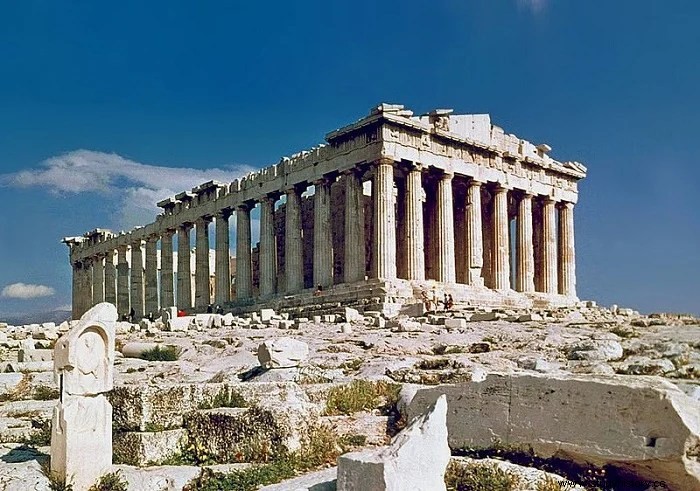
Historic cliffhanger
The Parthenon did not cease to exist after the golden age of Athens in the 5th century BC. It continued as a temple for Athena, and became, along with the city of Athens, a major tourist attraction for the Roman Empire. Athens in general was highly respected by Roman visitors, along with the rest of classical Greek culture and heritage. The Romans treated the cultivation of Greek culture as a sign of distinctive excellence among the Roman elites. Many preferred to write and communicate in Greek over Latin.
The history of Christianity in the Roman Empire is fascinating and convoluted. For our purposes, it interrupts the anodyne tourism of the Romans, forcing us to elaborate on the later history of the Parthenon. One question in particular burns strongly. What happened to the pagan Parthenon with the spread of Christianity?
Parthenon, fast forward
Damages from Late Antiquity
In the face of the rising tide of Christianity, the Parthenon did not lose function. In fact, the Greeks reconfigured themselves over time to serve new features.
Structural changes in the Parthenon did not begin only under pressure from Christianity. In fact, changes resulted earlier, from at least one devastating fire in the 3rd century during the late Roman Empire. Some credit one of these fires to the Germanic Heruli tribe in 267 AD. In their attack, they burned Athens to the ground, and with it the entire Acropolis. Many other cities suffered similar fates during this period of Roman flattening.
The Parthenon revived
In the following years, the citizens of Athens and Emperor Julian (the Apostate) led many efforts to finance repairs. However, a combination of frugality and weakened stone (from thermal rupture) resulted in an incomplete restoration. They just gave the interior of the Parthenon a new roof. This roof was probably more practical in design and choice of material, compared to the original, white marble roof from Periclean.

The first Christian changes
Reverse the entrance
The outer aisle was thus detached from the inner temple, and it is to this day. This secession laid the foundation for the structure of the Parthenon as a church. The Parthenon was converted and dedicated to the Virgin Mary around the 6th century AD. The outer colonnade was partially filled in to form a shield wall that only opened to the west. This forced medieval Christians to enter the Parthenon on the opposite side of antiquity. This also confused visiting antiquarians, who expected the monument to reflect Pausanias' descriptions of the temple back in the 2nd century AD
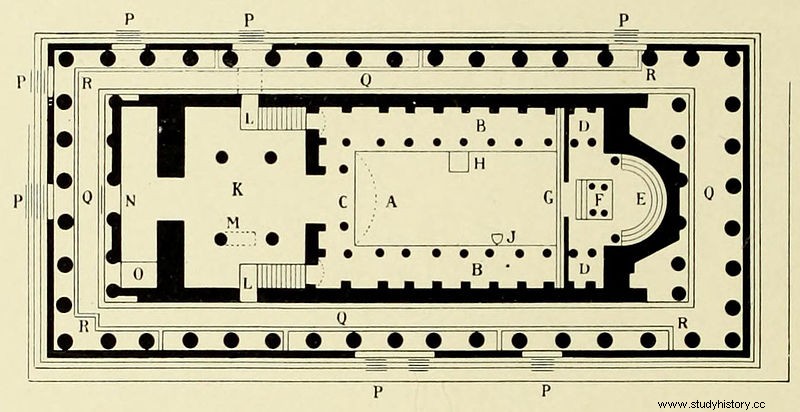
In ancient times, the western side of the Parthenon also had a proper entrance to the back room ( opisthodomos ). But when the Christian Athenians prioritized the west side for entry, they left the western main entrance. Instead, they chose a smaller opening next door. Evidence of this includes "graffiti" that is closer to this side door than the original western entrance. The Christian Athenians also turned the back room into a narthex, supplying it with all the equipment needed for baptism. Windows were also cut high into the walls for more light.

Apsis
The eastern side, according to Christian tradition, now had to contain the apse, a semicircular (conch) space that is characteristic of many churches throughout Europe. The apse forms the architectural backdrop for the indoor altar. In cathedrals, such as the medieval Parthenon, the apse also houses the bishop's throne.
The Christian Athenians tore down part of the eastern wall and turned it into an apse. The apse was assembled using recycled stone from other classical monuments (a phenomenon known as spolia :architectural fragments removed from their original structural context, and reused in new buildings). Just before (Archbishop) Michael Choniates' tenure in the 12th century AD, the Christian Athenians expanded the apse. They also tore part of the eastern frieze to fit it.

Handling Pagan Iconography
Athena statue
The Athenian Christians probably did not need to do much with the famous statue of Athena. There are several theories about the fate of this statue.
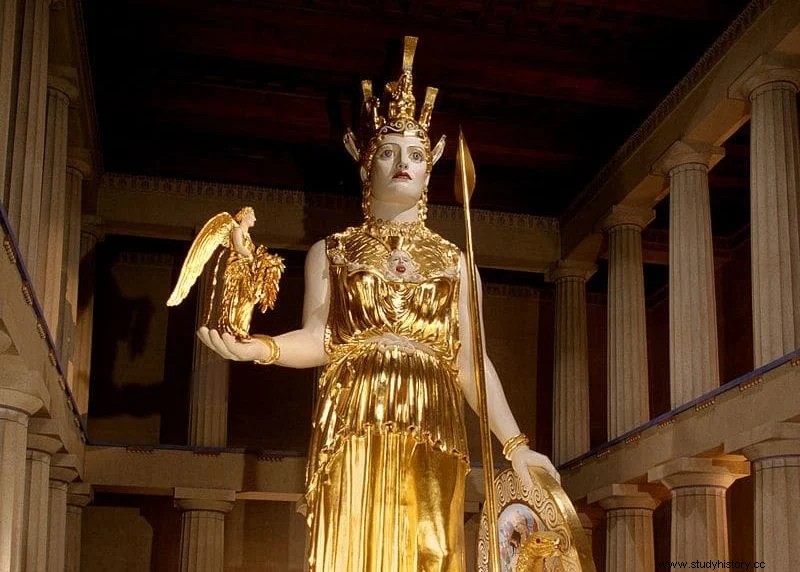
One theory is that the fire (s) from the 3rd century AD. destroyed the statue. It is possible that the late Roman Athenians made smaller, cheaper replacement statues to allow dedications for Athena to continue. In fact, the Parthenon continued as a temple for Athena at least until Emperor Theodosius II ordered the closure of all pagan temples in the 5th century AD. However, the effectiveness of this ban is very debatable, and varies by region. For more context, Emperor Justinian ordered the closure of all pagan schools of philosophy in 529 AD. But even after that, traditional Greek religion almost certainly continued in countless ways under varying intensity of pressure from (Eastern) Christian emperors to quit.
The biography of the neoplatonist Proclus describes that Athena orders him to prepare his house for moving in. This happened after she was thrown out of her home, the Parthenon, by Christians.
Another theory about the fate of the statue of Athena is that it was already plundered by a Roman emperor, and taken to Constantinople, the capital of the Eastern Roman (Byzantine) Empire. It was safely stored there, until it was destroyed, along with the city of Constantinople itself, by the 4th Crusaders in 1204 AD. the sack of Constantinople.
Metopes and frieze sculptures
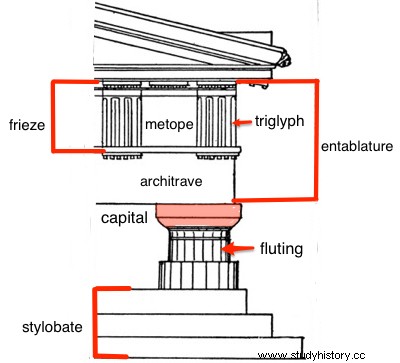
The metopes of the Parthenon contained extensive sculpted scenes from Greek mythology. The sculptures were not necessarily inappropriate. However, they were not compatible with the goals of the Christian religion. Therefore, the Christian Athenians destroyed the sculptures, perhaps 3/4 of the metopes, until they were unrecognizable. Interestingly, many of the inner frieze sculptures were left intact.
There are theories as to why this happened. One possibility is that the Christians interpreted biblical messages from some of the sculptures, perhaps even modified. A famous example of this would be the famous "Metop of the Annunciation", allegedly destroyed in an incomplete way, due to an interpretation of the sculptures showing the announcement.

Christian Iconography
Icons
Michael Choniates himself decorated his favorite cathedral, which he called "light and airy", no doubt thanks to the achievements of the classical Doric architectural order. Like many Orthodox churches, Michael may have financed significant decoration of the church's interior. Such decorations included icons of angels, saints, and bishops, as well as paintings of famous biblical moments. However, very little of the Parthenon's walls survive, so little of this decoration survives with them. Apparently much more of this Christian decoration was visible until 1880, as noted by the then Marquess of Bute. Fortunately for us, he commissioned a series of watercolor paintings to record what he could of the contents.
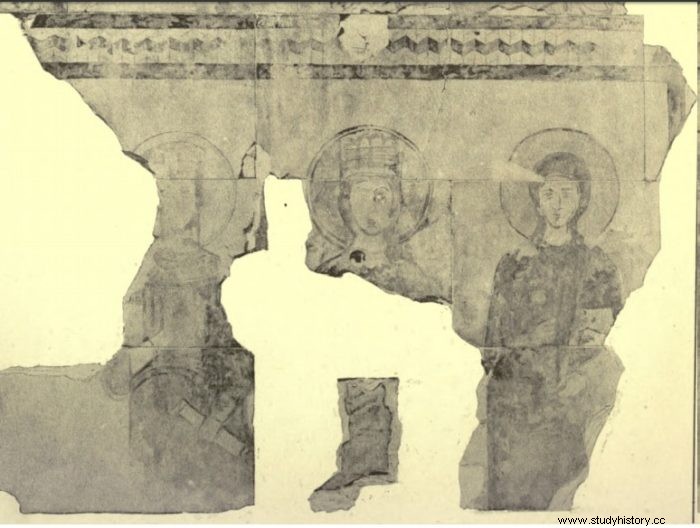

mosaic
The Christian Athenians also built mosaics into the upper, semi-domicile part of the apse in the time of Michael Choniates. The British Museum's Parthenon collection contains 188 tesseraes from this mosaic. These tesserae were discovered in the 1830s and acquired in 1848 from a Briton in Athens.
Medieval Impressions of the Parthenon
The Parthenon's fame as a cathedral
Athens, and the Parthenon, were no less famous to the people of the medieval world than in antiquity. In fact, the Parthenon, known by some as the "famous" temple of Theotokos Atheniotissa, may have been more popular with pilgrims in the Eastern Roman (Byzantine) empire in its Christian context. It also received imperial attention. In 1018 AD Emperor Basil II "Bulgar Slayer" visited the city, especially to celebrate and worship in the Parthenon Cathedral. He also gave the cathedral decorations, including a golden dove. This dove hung down from the inner roof, and circled around the cross, representing the Holy Spirit in the Parthenon. Another thing that was influential in the church was a lamp that burns continuously.
In fact, the most well-recorded ceremony known to have taken place inside the Parthenon was the inauguration of Michael Choniates as archbishop. In a way, this is hardly surprising, since most ancient pagan ceremonies in many cultures took place outdoors. However, this speaks to the fact that the Athenians did not reject or neglect the ancient significance of the Parthenon in the medieval Christian world - they transformed it.
Michael Choniates' thoughts on the Parthenon and Athens
For Choniates, Athens had a special existence and destiny. Around 1175 he gave a sermon that largely referred to ancient warrior mythology and classical history. He spoke of Athens' role as "queen of cities," and "nurse of reason and virtue ... exalted in fame not only for monuments, but for virtue and wisdom of every description." , they were the better . The most important thing is that they no longer worship the false virgin, Athena, but the true virgin Mary. He also branded Athens as "the top of the sky" and "the new mountain Horeb".
However, Choniates himself notes that he lost the words of the crowds he preached to, for he may as well have "spoken Persian or Scythian". Other times he complained about their speech, ignorance, bizarre wine and parish character. Nevertheless, Michael took care of his flock and spoke out against excessive tax collectors and imperial demands. And throughout, he loved his cathedral, which he called light, airy and beautiful.
What the Parthenon could have been
For more than a millennium (about 500-1687 AD), the medieval structure of the Parthenon would have resembled the modern state of a nearby, smaller temple in Athens - the well-preserved temple of Hephaestus and Athena Hephaistia (formerly known as "Theseison"). ). The Christian Athenians, like the Parthenon, also turned this temple into a church in late antiquity, dedicated to St. George. Today, some consider the temple to be the best-preserved example of ancient Greek Doric-style architecture. The outer aisle and the inner walls are almost intact, and still connect to each other in many places through their original marble rafters.
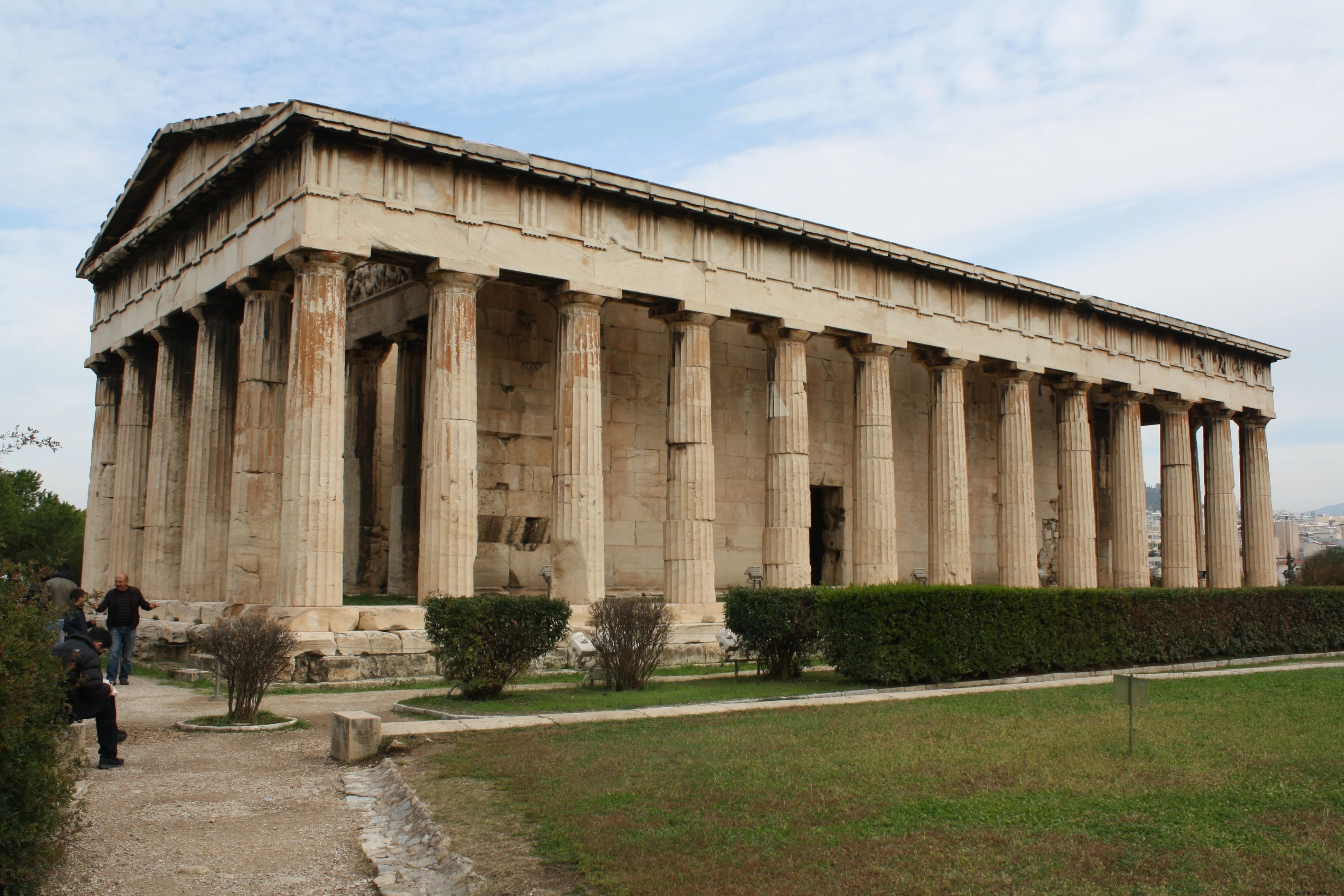

the conclusion
If Fortune had been kinder, the Parthenon could have survived to modernity in a state comparable to the Temple of Hephaestus. However, the fires of the 3rd century probably damaged too many marble sleepers between the colonnade and the walls. More importantly, in 1687 the Venetians, under the Swedish commander Otto Wilhelm Königsmarck, besieged the Acropolis as part of the Morean War. During the siege, the Erne garrison used the Acropolis as a natural fortress and as a powder magazine.
The Venetian bombers that besieged Athens fired cannons at the Acropolis, and a few stray shots ignited the gunpowder in the Parthenon. After all the dust had settled, it was clear that the explosion had wiped out the entire middle of the structure, along with the minaret that had replaced the Christian bell tower after the Ottoman conquest of Greece. Just a few years earlier, the monumental gateway to the Acropolis, Propylaea, suffered a similar tragedy for similar reasons.

Had this destruction not occurred in 1687, the state of the Parthenon today could have been as commendable as that of the Temple of Hephaestus. If the Parthenon had survived to this day, one might ask it would have the title "best preserved temple", in addition to all the other glory awarded it through construction, longevity and endurance.
Works Cited
Bearded, Mary. "The finest mosque in the world" I Parthenon, 49 –82. Cambridge:Harvard University Press, 2003.
